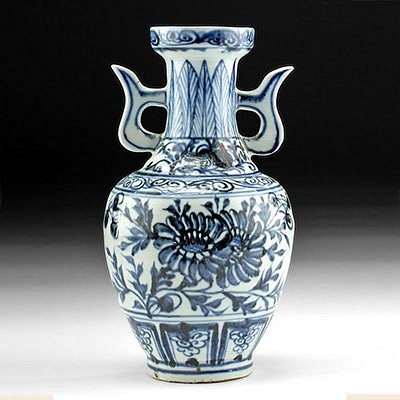Costa Rican Diquis / Linea Vieja Stone Fertility Idol
Lot 71
About Seller
Artemis Gallery
686 S Taylor Ave, Ste 106
Louisville, CO 80027
United States
Selling antiquities, ancient and ethnographic art online since 1993, Artemis Gallery specializes in Classical Antiquities (Egyptian, Greek, Roman, Near Eastern), Asian, Pre-Columbian, African / Tribal / Oceanographic art. Our extensive inventory includes pottery, stone, metal, wood, glass and textil...Read more
Estimate:
$900 - $1,350
Absentee vs Live bid
Two ways to bid:
- Leave a max absentee bid and the platform will bid on your behalf up to your maximum bid during the live auction.
- Bid live during the auction and your bids will be submitted real-time to the auctioneer.
Bid Increments
| Price | Bid Increment |
|---|---|
| $0 | $25 |
| $300 | $50 |
| $1,000 | $100 |
| $2,000 | $250 |
| $5,000 | $500 |
| $10,000 | $1,000 |
| $20,000 | $2,500 |
| $50,000 | $5,000 |
| $100,000 | $10,000 |
| $200,000 | $20,000 |
About Auction
By Artemis Gallery
Nov 19, 2020
Set Reminder
2020-11-19 10:00:00
2020-11-19 10:00:00
America/New_York
Bidsquare
Bidsquare : Ancient Treasures & Holiday Jewelry
https://www.bidsquare.com/auctions/artemis-gallery/ancient-treasures-holiday-jewelry-6035
Travel around the world and back in time and be amazed at the treasures you will find! Antiquities from Egypt, Greece, Italy and the Near East, Asian, Pre-Columbian, African/Tribal/Oceanic, Native American, Spanish Colonial, Fine Art, much more. Shop early for the holidays! Artemis Gallery info@artemisgallery.com
Travel around the world and back in time and be amazed at the treasures you will find! Antiquities from Egypt, Greece, Italy and the Near East, Asian, Pre-Columbian, African/Tribal/Oceanic, Native American, Spanish Colonial, Fine Art, much more. Shop early for the holidays! Artemis Gallery info@artemisgallery.com
- Lot Description
Pre-Columbian, Costa Rica, Atlantic Watershed, Diquis or Linea Vieja style, ca. 700 to 1000 CE. Carved from a coarse grey basalt, a fertility figure depicting a pregnant monkey, the simian creature crouching with her hands / paws upon her projecting pregnant belly, her long tail with its curled end raised on the backside, her visage quite expressive with coffee bean eyes, a protruding snout, and a toothy grimace. Simian creatures were favorites of Pre-Columbian artisans; monkeys were beloved for their antics which were understood as parodying human behavior. Size: 4.75" W x 8.875" H (12.1 cm x 22.5 cm)
Interestingly, the near spherical form of this monkey's middle conjures images of the famous petrospheres known as Las Bolas attributed to the extinct Diquis culture. As the best-known stone sculptures of the Isthmo-Colombian area, Diquis spheres range in size from a few centimeters to over two meters in diameter. Most are sculpted from gabbro, a coarse-grained type of basalt. First "discovered" in the 1930s when the United Fruit Company was clearing the jungle to establish banana plantations, many were damaged in the process. What's more, legends of hidden gold motivated workers to drill holes in the spheres and blow them up with sticks of dynamite. By the 1940s, a legitimate investigation was conducted by Samuel Kirkland Lothrop of the Peabody Museum of Harvard University. As recently as 2010, University of Kansas researcher John Hoopes visited the site with the intention of evaluating the area's eligibility for protection as a Unesco World Heritage Site. Countless legends surround Las Bolas including the myth that they come from Atlantis or that the indigenous possessed a poison that was able to soften the rock. According to the cosmogony of the Bribri, these stone spheres are in fact Tara's cannon balls. Tara or Tlatchque, god of thunder, according to the native's legend, used a giant blowpipe to shoot the balls at the Serkes, gods of winds and hurricanes, to force them out of these regions. Marvels of near perfect roundness, the Bolas are rich in aesthetic appeal as well as wonder!
Provenance: Whisnant Gallery, New Orleans, Louisiana, acquired prior to 1997
All items legal to buy/sell under U.S. Statute covering cultural patrimony Code 2600, CHAPTER 14, and are guaranteed to be as described or your money back.
A Certificate of Authenticity will accompany all winning bids.
We ship worldwide and handle all shipping in-house for your convenience.
#123004Normal surface wear with earthen encrustation. Losses to lower back side as shown. Details are still nice and vivid.Condition
- Shipping Info
-
All shipping is handled in-house for your convenience. Your invoice from Artemis Gallery will include shipping calculation instructions. If in doubt, please inquire BEFORE bidding for estimated shipping costs for individual items.
-
- Buyer's Premium



 EUR
EUR CAD
CAD AUD
AUD GBP
GBP MXN
MXN HKD
HKD CNY
CNY MYR
MYR SEK
SEK SGD
SGD CHF
CHF THB
THB

















